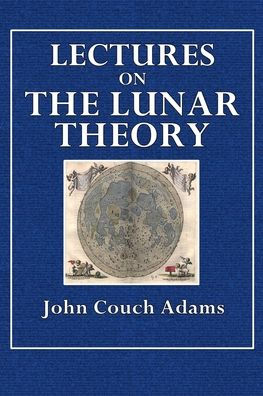Lectures on the Lunar Theory
This set of eighteen lectures on the theory of the moon's motion is taken, without change of any sort, from the complete collection of Adams' scientific papers. The two volumes, containing these papers, were printed at Cambridge in 1896 and 1900. The first volume contained all of the published articles; the second was made up from the manuscript material left by Professor Adams, and the lectures are there published, for the first time. For those who have not means of access to the full collection, the present reprint will be of value. The lectures do not cover all of Adams' investigations upon the subject. They have been made up from the notes found among his papers, prepared for current use in his lectures, and changed from year to year, developing with that constant care and interest which he gave to this problem for many years. The first lecture has been built up from the notes taken by those who had the fine opportunity of listening to the delivery, and is historical in treatment. Sufficient material was found among the manuscript papers, to supply the remaining lectures in full. Although not arranged nor completed by Adams, for any such purpose, his finished and precise method of carrying on his current work made the process of selection and combination direct and certain. After developing the general equations for the moon's motion, the treatment followed is by separating the special problems. The Variation is first taken up, the inequality that Newton first solved. The Parallactic Inequality, the Annual Equation and the Evection are successively treated, with the resulting determination of the numerical constants. These accord well with those determined by Delauney, in his treatise upon the Theory of the Moon. The change of the Eccentricity and the motion of the Node have special treatment. This course of lectures, it appears, did not include the evaluation of the amount of the Secular Acceleration of the moon's mean motion ; though Adams had completed his investigation, and published his result in 1853, several years before the commencement of these lectures. The controversy following the publication of this constant is historical. His own contribution to the discussion, printed in 1860, is a model of earnest, vigorous and at the same time courteous statement.
--Physical Review
"1103329541"
--Physical Review
Lectures on the Lunar Theory
This set of eighteen lectures on the theory of the moon's motion is taken, without change of any sort, from the complete collection of Adams' scientific papers. The two volumes, containing these papers, were printed at Cambridge in 1896 and 1900. The first volume contained all of the published articles; the second was made up from the manuscript material left by Professor Adams, and the lectures are there published, for the first time. For those who have not means of access to the full collection, the present reprint will be of value. The lectures do not cover all of Adams' investigations upon the subject. They have been made up from the notes found among his papers, prepared for current use in his lectures, and changed from year to year, developing with that constant care and interest which he gave to this problem for many years. The first lecture has been built up from the notes taken by those who had the fine opportunity of listening to the delivery, and is historical in treatment. Sufficient material was found among the manuscript papers, to supply the remaining lectures in full. Although not arranged nor completed by Adams, for any such purpose, his finished and precise method of carrying on his current work made the process of selection and combination direct and certain. After developing the general equations for the moon's motion, the treatment followed is by separating the special problems. The Variation is first taken up, the inequality that Newton first solved. The Parallactic Inequality, the Annual Equation and the Evection are successively treated, with the resulting determination of the numerical constants. These accord well with those determined by Delauney, in his treatise upon the Theory of the Moon. The change of the Eccentricity and the motion of the Node have special treatment. This course of lectures, it appears, did not include the evaluation of the amount of the Secular Acceleration of the moon's mean motion ; though Adams had completed his investigation, and published his result in 1853, several years before the commencement of these lectures. The controversy following the publication of this constant is historical. His own contribution to the discussion, printed in 1860, is a model of earnest, vigorous and at the same time courteous statement.
--Physical Review
--Physical Review
6.99
In Stock
5
1

Lectures on the Lunar Theory
98
Lectures on the Lunar Theory
98
6.99
In Stock

Product Details
| ISBN-13: | 9781663516923 |
|---|---|
| Publisher: | Dapper Moose Entertainment |
| Publication date: | 06/13/2020 |
| Pages: | 98 |
| Product dimensions: | 6.00(w) x 9.00(h) x 0.23(d) |
About the Author
From the B&N Reads Blog
